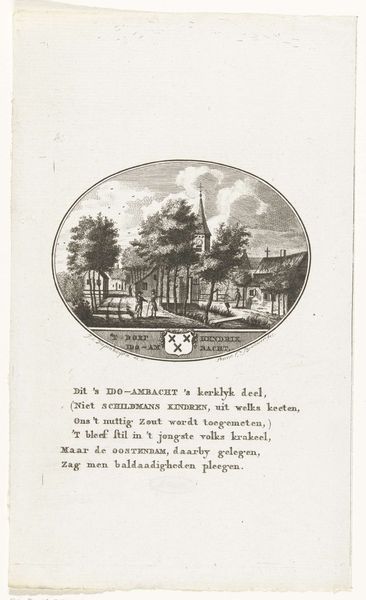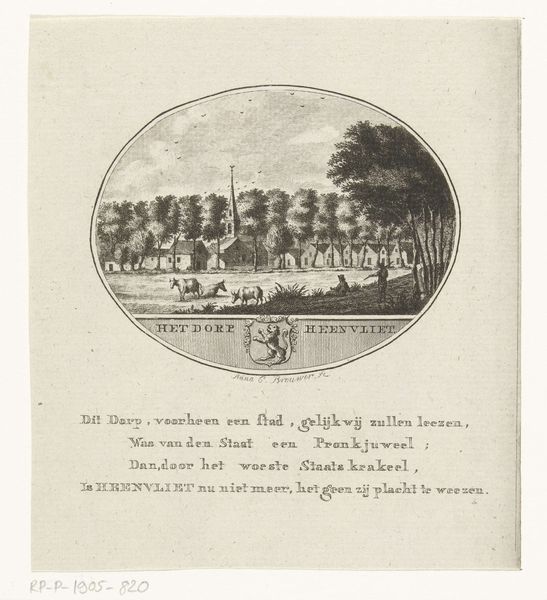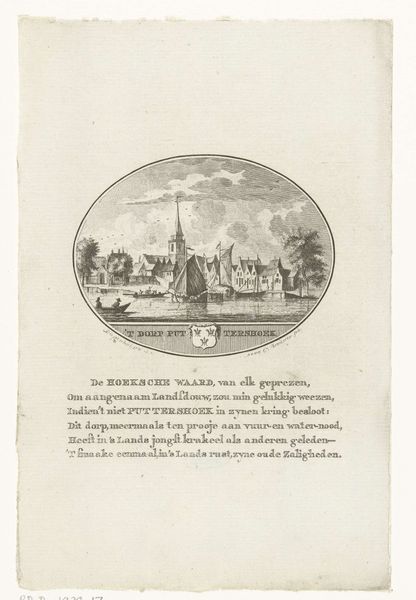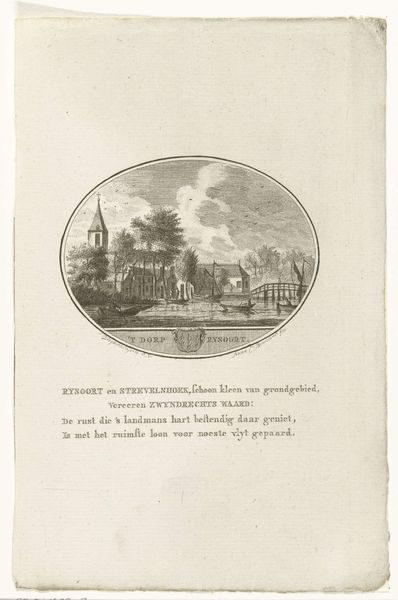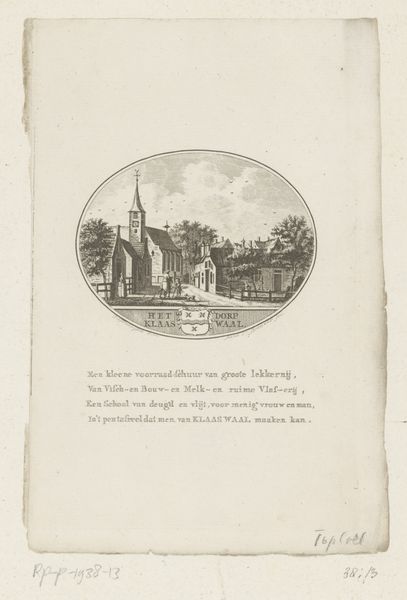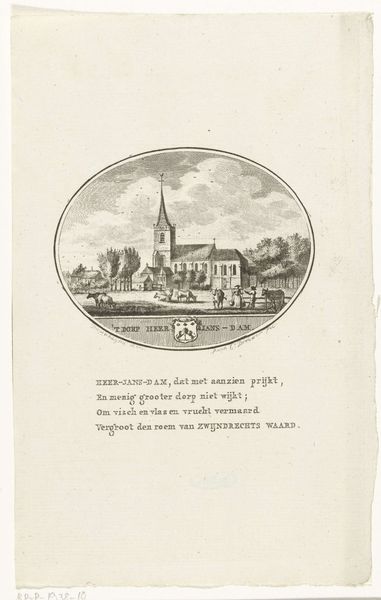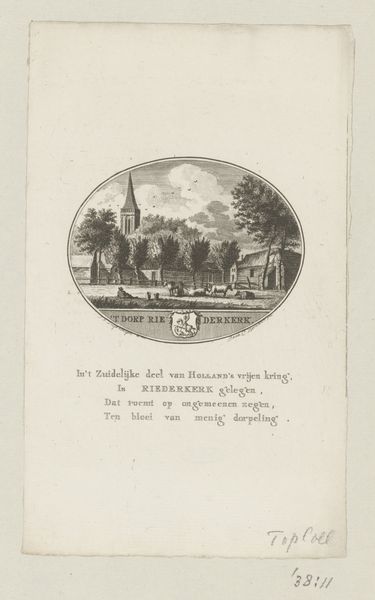
print, engraving
#
neoclacissism
#
dutch-golden-age
# print
#
landscape
#
cityscape
#
engraving
Dimensions: height 220 mm, width 140 mm
Copyright: Rijks Museum: Open Domain
Editor: So, this is "Gezicht op het dorp Maasdam," or "View of the village Maasdam," made around 1791-1793. It's an engraving by Anna Catharina Brouwer. It has this quiet, serene feeling… like stepping back in time. What draws your attention most in this cityscape? Curator: The encapsulation within the oval, almost like a locket, strikes me. The image becomes a preserved memory. Notice how the engraver has paid careful attention to rendering minute detail; what significance do you think such minute detail held for the artist or audience of the time? Editor: Hmm…perhaps a desire for accuracy, a true representation of the village? Curator: Precisely. But more than just accuracy, it is a visual declaration of ownership, an emotional claim. These detailed depictions weren’t merely about geographical record. This connects to a deeper impulse to define and cherish the familiar through imagery, especially given the social changes occurring in that era. Can you detect symbols, however modest, beyond simple representation? Editor: I see the church steeple, but that seems…obvious? And are those people crossing the bridge, figures of commonality? Curator: The steeple signifies not just the physical presence of faith but its omnipresent guidance within the community. Yes, the bridge and its figures suggest connectivity – literal and metaphorical – uniting different aspects of life. Do you consider that choice to echo the social concerns or prevalent philosophy? Editor: I never thought about it that way, connecting everyday details to bigger ideas. Thanks! Curator: Indeed, images can often function as small mirrors, reflecting expansive concepts of society, spirituality and self.
Comments
No comments
Be the first to comment and join the conversation on the ultimate creative platform.
